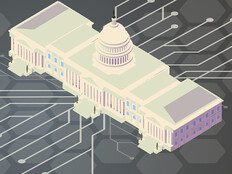Real-Time Compliance and Risk Mitigation Through Agentic Systems
Agentic AI can play a vital role in helping agencies manage real-time compliance and risk by continuously monitoring large volumes of data for anomalies and thresholds.
“There’s a lot of data that must be sorted in real time, and AI can be always-on, reviewing and analyzing to ensure that these contracts are in compliance,” Saunders says. “That agent is always running in the background, providing helpful information to those human employees.”
Agentic AI can empower organizations to stay ahead of evolving threats by proactively monitoring activity and intervening when needed.
“It can pause actions, escalate issues and surface risks to the right stakeholders before they become widespread,” Zilbershot says.
Because agentic AI learns from every interaction, it also becomes increasingly effective at enforcing compliance and managing risks in real time.
“This helps agencies operate with confidence while staying aligned to evolving federal standards,” Zilbershot explains.
RELATED: Agencies can avoid “ghost IT” with the right partner.
Mapping User, Data and Access Relationships Dynamically
Agentic AI systems can build and refine understanding of data relationships by learning from user interactions and maintaining memory over time.
“As it gets access to more information, and as it learns and maintains that memory from the actions that it takes, it’s able to understand where data exists and update different relationships based on those human interactions,” Saunders says.
By incorporating feedback loops and analyzing how users reframe queries, agentic AI can continuously adapt its understanding of intent and improve the accuracy of future responses.
UP NEXT: Artificial intelligence can help with hybrid cloud security challenges.
How Agencies Can Operationalize Agentic AI Today
Agencies can start using agentic AI in areas like process automation, compliance monitoring and data analysis.
“By automating routine tasks, agencies can free up staff to focus on mission-critical priorities,” Zilbershot says.
She recommends starting with targeted pilot programs enabling agencies to test how agentic AI performs in federal environments before expanding across departments. Agencies should begin running AI agents with strong supervision, requiring human approval before any changes or actions are taken, and gradually expand use as confidence and governance structures mature.
“With the right guardrails, agencies can move swiftly from experimentation to enterprisewide AI transformation,” Zilbershot says.














